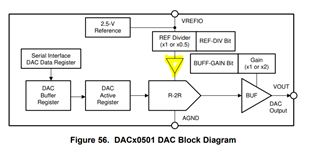I had the same issue as the one on this thread.
And I did notice the REF-ALARM flag on the STATUS register so figured out what was the issue with that. The question came when I tried to make both the Gain and the DIV 1 so basically loading a 0000 on register GAIN. That didn't work. It does work if I load a 0101 on the GAIN register which basically makes GAIN = 2 and DIV = 2. Mathematically, both should cancel each other the same way but for some reason the result is not the same.
Is it the way that they are internally used? Hopefully somebody can help me understand this issue better,



